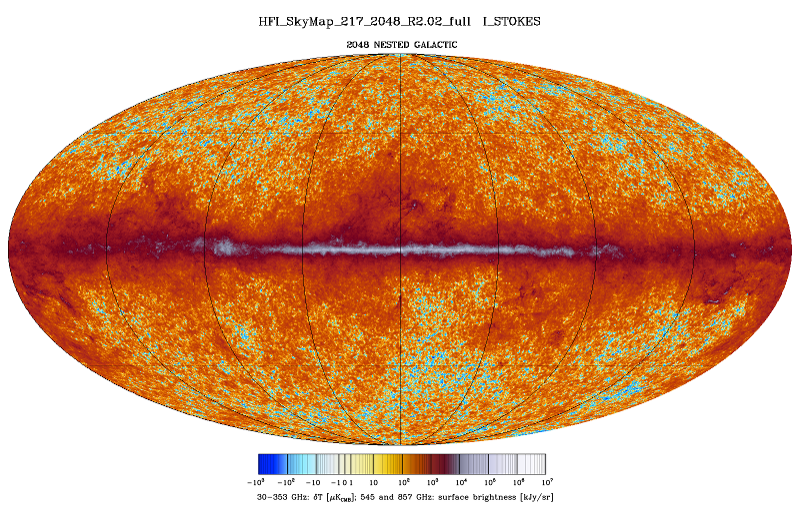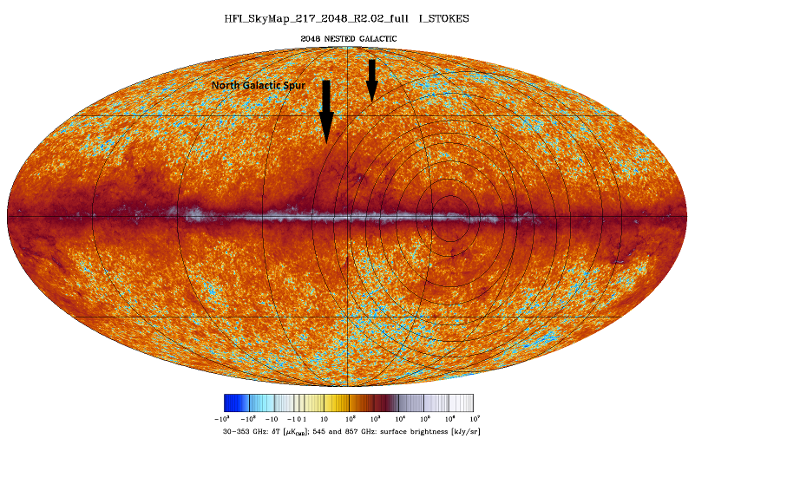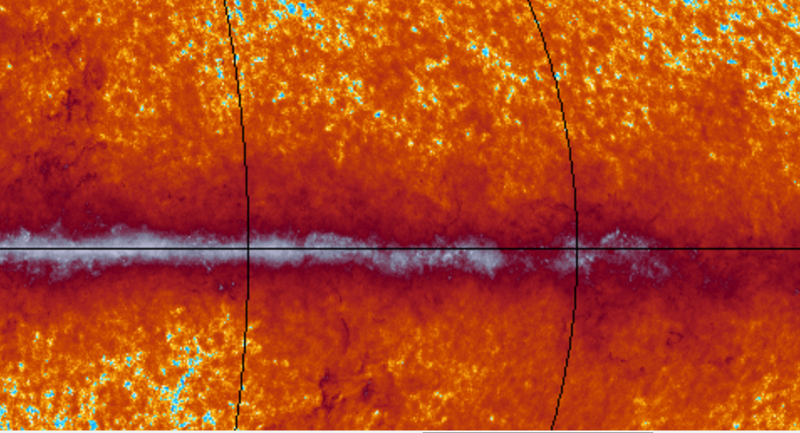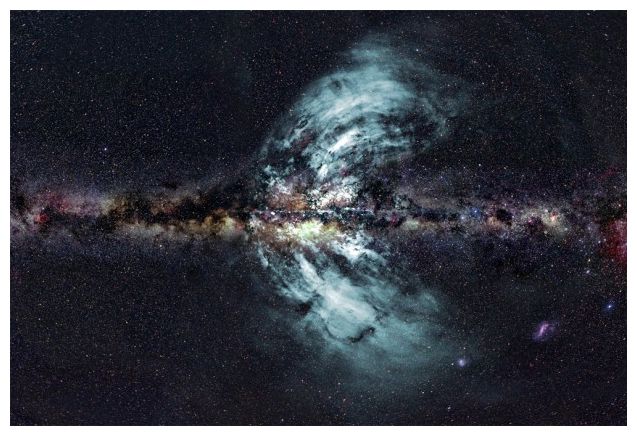We here at the Canadian Institute for Applied Astronomy were examining maps and data from the Planck Satellite as part of our efforts to better understand the physics of the early universe and we noticed concentric density rings that centered on about 307 degrees galactic longitude. This area is in the southern constellation of Crux. The pressure waves form progressive concentric rings outwards from that location and exactly coinciding with the arc of the North Polar Spur. The origins and nature of the Spur has long been debated. M. Wolloben in 1977 presented a model consisting of two synchrotron emitting shells as its origins. (A New Model For The Loop-I (The North Polar Spur) Region. M. Wolloben, http://arxiv.org/pdf/0704.0276v1.pdf) He theorized that two OB-associations coincide with the centers of the shells. One of the possible locations for the center of the shells was thought to be possibly in the Lower Centaurus/Crux region, which is where the cneter of the expanding rings is. In order to see the rings plainly the image was enlarged onto a 40" screen where the rings became immediately visible. Image one is the raw image from Planck. In image two the shells have been traced out as observed in the Planck map. Image three is from the Parkes Radio Observatory an shows the radio shells emanating outward from the region centered on 307 degrees of galactic longitude. What is occurring to produce this phenomena is not well understood, but it appears that whatever is happening in the region centered on 307 degrees of galactic longitude is the most powerful influence that is affecting the structure of our galaxy at the present time. It may be a combination of OB associations and hypernova. The dense gas clouds that blanket this area of space make it difficult to determine at these wavelengths.

Figure 1. Raw image of the whole sky as recorded by the Planck Satellite.

Figure 2. The pressure rings found in the Planck data. Refer back to Figure 1 to see the rings in the raw data.

Figure 4 The region centered on 307 degrees of galactic longitude as seen byPlanck.

Figure 5. This is the radio images as imaged by the Parkes Radio Telescopeoverlaid on the optical view of the sky. The phenomena occurring here is not well understood and represents a totally new type of phenomena that to explain what is going on in the Milky Way to produce this massive structure and the changes it is producing in the galactic structure.